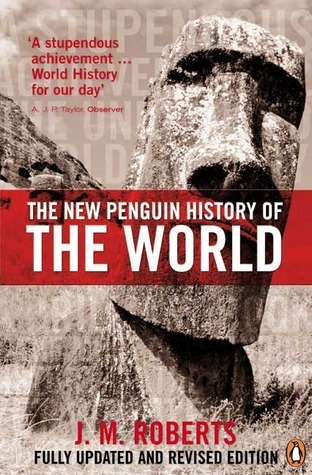
The New Penguin History of the World
Book Description
History is not just a timeline; it’s a thrilling epic filled with heroes, villains, and unexpected twists. Journey through the ages with J.M. Roberts as he weaves the tapestry of human civilization, revealing the relentless struggles for power, culture, and identity that shape our world. From the rise of empires to the fractures of society, this bold vision uncovers the forces that have driven humanity forward. Experience the drama of pivotal moments and the surge of revolutions that altered destinies. What if understanding our past is the key to unraveling the mystery of our shared future?
Quick Book Summary
"The New Penguin History of the World" by J.M. Roberts offers a sweeping narrative of human history, from the earliest civilizations through the dawn of the twenty-first century. Rather than just chronicling dates and events, Roberts delves into the grand currents that have driven humanity—exploring how cultures, technologies, religions, and political systems have evolved and collided over time. He examines the vibrant intersections between regions and peoples, the rise and collapse of empires, and the enduring quest for identity and progress. With a global perspective, Roberts connects disparate regions and historical eras, presenting history as an interconnected epic woven with moments of conflict, cooperation, and transformative change. His approach not only recounts what happened but also investigates why changes occurred and how the past continues to shape today's world.
Summary of Key Ideas
Table of Contents
The Emergence and Spread of Civilizations
Roberts begins by tracing the origins of human civilization, examining the emergence of sedentary societies, agriculture, and the first great cities. He explores the foundational roles played by ancient Egypt, Mesopotamia, China, and the Indus Valley, highlighting how early humans organized themselves, developed belief systems, and built complex societies. The roots of government, writing, and trade are examined as foundational drivers of progress and cultural identity.
Forces of Social and Political Change
Moving through the classical and medieval periods, Roberts articulates the dynamic forces that led to the splitting and merging of societies. He discusses the ascent of the Greco-Roman world, the flowering of classical India and China, and the religious revolutions brought by Buddhism, Christianity, and Islam. This section emphasizes the impact of migrations, invasions, and the persistent tension between continuity and transformation within societies.
Cultural and Technological Exchange
The book delves into the mechanisms of cultural and technological diffusion, showing how ideas, inventions, and customs have moved across continents. Trade routes like the Silk Road and maritime networks, as well as the spread of print technology, gunpowder, and agricultural innovations, facilitated not only material exchange but also complex cultural interplay. Roberts considers how technological and cultural interactions accelerated the pace of change and drew different regions into closer contact.
The Rise and Fall of Empires
A recurring theme is the rise and collapse of empires—from Rome and Han China to the Mongols, Ottomans, and the European colonial powers. Roberts examines how empires amassed and managed their power, reshaped the regions they dominated, and ultimately succumbed to internal or external pressures. These great powers not only altered borders but also reshuffled populations, shaped religious currents, and redefined social hierarchies.
Globalization and the Modern World
In the modern era, Roberts analyzes the unprecedented wave of globalization, technological advancement, and political upheaval that have defined recent centuries. He tracks the birth of nation-states, the influence of industrialization, revolutionary movements, world wars, and decolonization, leading into the increasingly interconnected present. The narrative closes by reflecting on how history’s patterns inform our current global challenges and opportunities, underscoring the need to understand the past to shape a better future.
Download This Summary
Get a free PDF of this summary instantly — no email required.





